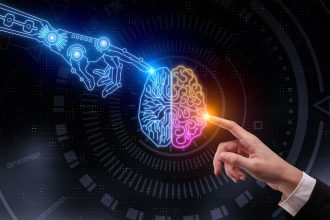
Artificial intelligence is now being used to process vast amounts of satellite imagery to monitor climate change, predict disasters, and assess renewable energy potential. One satellite constellation alone generates 1.6 terabytes of data per day, which is too much for humans to analyze manually. AI is stepping in to make sense of this deluge, but scientists warn that analysis is still falling behind the speed of data collection.
The result is a growing gap between what climate data can show and how quickly it can be used to inform real-world decisions.
AI boosts climate monitoring accuracy
Advances in Earth observation are already proving effective. AI models trained on 23 terabytes of unlabeled satellite data are producing more accurate assessments than traditional methods. A model built using the DeepSeek architecture improved early-warning predictions for natural disasters by 18%, potentially saving lives in the event of floods, wildfires, or storms. Google used AI to analyze 800,000 satellite images and found that rooftop solar panels on buildings around the world could produce three times the total global electricity demand. Its AI-powered nowcasting tool also outperforms traditional precipitation forecasts, earning praise from Met Office meteorologists.
Meanwhile, consumer-facing applications are having measurable impact. Since 2011, Google Nest thermostats have saved 113 billion kilowatt-hours of energy — twice the annual electricity use of Portugal.
The data is growing faster than the infrastructure
Despite the breakthroughs, the scale of data continues to grow faster than the tools used to analyze it. NASA’s Earth Science Data Systems handled 59 petabytes of data in 2021 and expects that number to reach 250 petabytes by 2025.
That pace of growth can hamper early-warning systems. For example, global land cover maps used to track cropland remain inconsistent. In African countries, fewer than 0.5% of map pixels show full agreement between models. Discrepancies like these create risks for governments and aid organizations trying to respond quickly to climate events.
DeepMind research director Koray Kavukcuoglu said preparing these datasets for AI training remains “labor-intensive and time-consuming,” and many AI models still struggle to scale efficiently in real-time applications. Safety also remains a concern, he said, adding that safety must be “at the core of model development,” especially when forecasting natural disasters.
What this means for the planet’s future
AI tools may soon play a major role in future hurricane seasons, with some models already predicting landfall before human meteorologists issue alerts. Their applications range from tracking wildlife in the Serengeti to modeling plasma in nuclear fusion experiments.
Multimodal platforms like Google’s Gemini are also changing the landscape. These systems can process text, images, video, and audio simultaneously — moving toward comprehensive, real-time climate intelligence.
Still, with data volumes rising and climate crises accelerating, the next 18 months will test whether AI can be deployed fast enough to make a difference. The tools now exist to help monitor and protect the planet, but only if they’re implemented in time.





